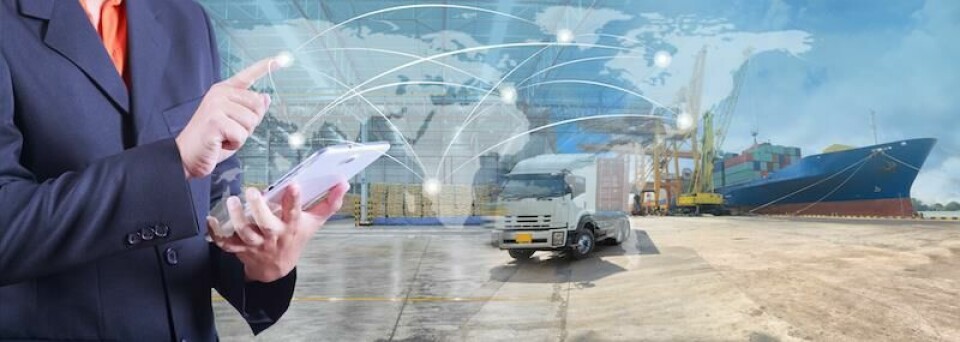Covid crisis boosts digital technology in supply chain
Despite the huge health and economic problems caused by the coronavirus, the pandemic has also had a positive impact on some of the supply chain and logistics strategies of automotive and other manufacturing companies. Experts have said greater supply chain visibility and a new sense of purpose across often fairly independent corporate divisions are just two trends that are becoming more pronounced across manufacturing companies.

“Don’t let a crisis go to waste,” said Erik LaValle, digital supply chain and customer experience technology portfolio leader at wireless network operator T-Mobile USA. Especially in supply chain, he said, the need for more information has forged a determination to address issues that had been on the table for a while. That has helped speed up the implementation of new digital technologies.
Kendra Phillips, chief technology officer (CTO), Supply Chain Solutions, at logistics giant Ryder, agreed the coronavirus crisis and the resulting disruptions of companies’ businesses have brought into the open how essential it is to have better insights into all links in the supply chain. That can only be done with the help of digitalisation, she said. Phillips and Lavalle were speaking in a Reuters webinar on improving supply chain visibility.
Manufacturers, suppliers and service providers need to be sharing information on a joint platform to better understand their supply chains and increase flexibility, Phillips said. “Getting partners on board is very challenging and Covid has really served as an accelerator here,” she said. Ryder operates a digital supply chain management platform, which is called Rydershare.
New sense of purpose
Experts participating in the Reuters webinar said that, in many companies, the crisis has also helped foster a new sense of purpose across all departments.
“One benefit of Covid is the way it has brought all enterprise functions together,” said Cindy Headen, executive vice president supply chain at multinational pizza restaurant group Domino’s. “Every team is now focused on keeping stores open and keeping team members safe.”
Using digital data technologies, companies should be better able to see and understand every link in their supply chain and this can help them be more flexible when a crisis hits. That’s especially important in a global business environment where developments are increasingly difficult to predict.
Before the coronavirus crisis, “we had a business continuity plan,” said Greg Orr, who is executive vice-president responsible for the US truckload business of Canadian logistics group TFI International. “But what actually happened was very different.”
Orr noted that as much as 40% of the business he booked in the first quarter “wasn’t there in the second quarter” of 2020. “The big thing is that we really have to become more adaptable and flexible.”
Complexity of supply
In the auto industry, with its hugely complex multi-tiered supply chains, the transparent exchange of information between manufacturers, suppliers and service providers has long been seen as essential if a company wants to flexibly respond to fast-changing business environments.
It also helps companies, including automakers, make processes more secure and allows them to make sure that, in all links in the production chain, certain standards are met.
In April 2019, Volkswagen Group embarked on a project with blockchain specialist Minespider to track the origin of raw materials used in some components and systems. In a press release issued at the time, Marco Philippi, head of strategy group procurement at VW said: “Digitalisation provides important technological instruments that enable us to track the path of minerals and raw materials in cross-border supply chains in ever greater detail. Together with Minespider we will use the blockchain technology to make our processes more transparent and secure.”
Volvo also is using blockchain to monitor whether cobalt, a key component in battery making, is produced in such a way that it meets the Swedish carmaker’s ethical and sustainability standards.
“We have gone all the way down and mapped every step in the supply chain down to the cobalt mine,” said Martina Buchhauser, chief procurement officer at Volvo Cars.
Speaking during a July 8 Financial Times webinar on the future of the car, Buchhauser said tracing so-called conflict materials was a key objective. Conflict materials are sourced from countries where conflict is occurring.
Buchhauser said Volvo could also use digital technology to, for example, map the supply chain for CO2-related components and systems.
Mapping the whole automotive supply chain would be ideal, but some automaker executives are sceptical that they will be able to capture the entire path taken by a component or system before it becomes part of the final product.
“Realistically, you cannot know everything down to the fifth tier supplier,” Ian Harnett, head of global purchasing at Jaguar Land Rover, said in the FT webinar.
Use the data
There is broad agreement that supply chain transparency will give companies a chance to adapt more quickly when a crisis hits, but TFI’s Orr said that not everyone is on board when it comes to using new technologies and new insights. And that’s a problem. Said Orr: “Ultimately, if no-one is using reports or data, it becomes more of a challenge.”
Ryder’s Phillips agreed. “The problem of people not using data is very real,” she said. While top executives at third-party logistics providers (3PL) are keen to adopt new digital approaches, many other people across the supply chain “want to do things they way they’ve always been done.” That’s why Ryder spends a lot of time on training and retraining, she said.
Despite the fact that the adoption of new technologies is not a smooth path, there is little doubt that companies are rapidly embracing digital technologies to better understand their supply chains.
In a recent report, market researchers Allied Market Research said the global market for supply chain management software and services is set to jump to $37.41 billion by 2027, more than doubling from $15.85 billion in 2019.





